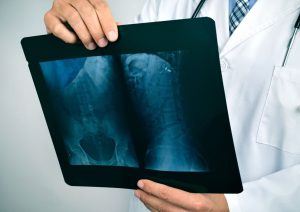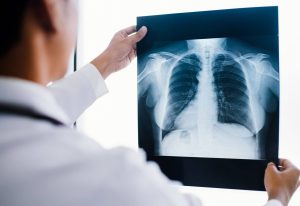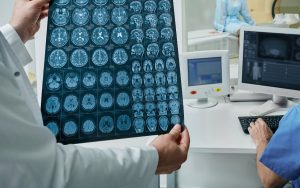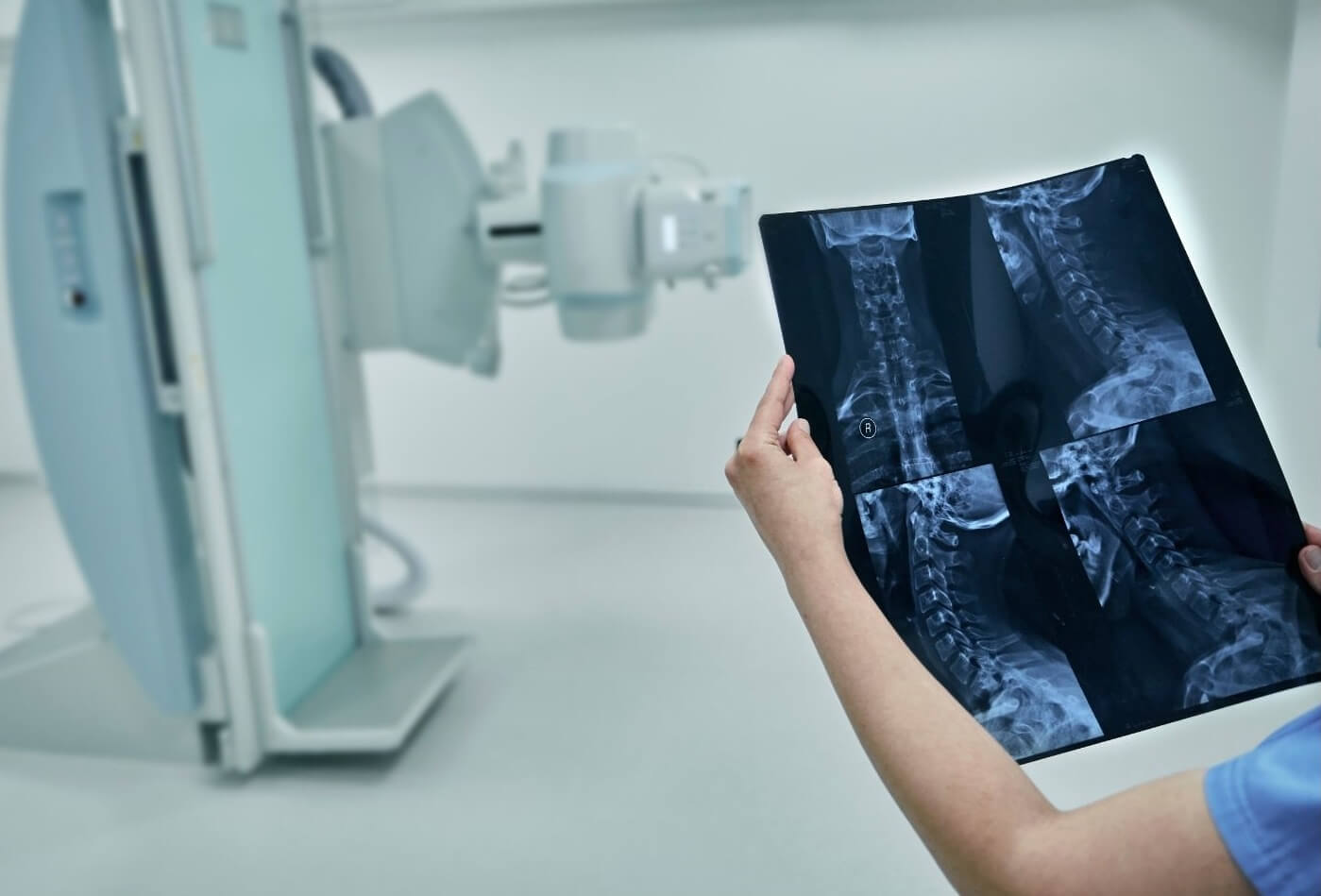To become a radiographer, you need to have an interest in healthcare, technology, and patient care, consider. Medical imaging is a useful tool for diagnosing conditions and planning medical treatments. A radiographer is a healthcare professional who uses imaging techniques such as X-rays, MRI scans and CT scans to help diagnose and treat patients. There are two main pathways to becoming a radiographer: diagnostic and therapeutic. A diagnostic radiographer uses imaging technologies to detect illnesses and injuries. In contrast, a therapeutic radiographer specialises in using radiation to treat diseases such as cancer. This guide outlines the steps to becoming a radiographer, the qualifications required and the essential skills for success.
What Does a Radiographer Do?
To become a radiographer, you can use multiple imaging technologies to diagnose patients. They work alongside doctors, nurses, and other medical staff members to ensure that the patients are given the correct diagnosis and treatments. A radiographer’s core responsibilities are:
- Conducting Imaging Procedures: To become a radiographer, you use X-ray machines, MRI scanners, and CT scanners to create images of the inside of patients’ bodies. These images help doctors diagnose and treat medical conditions.
- Assessing Patients: To become a radiographer, you assess patients’ needs and explain the procedures before they are imaged. The radiographer ensures that the individual is comfortable and checks for any contraindications to the imaging process that may impact its safety and effectiveness.
- Maintaining and Operating Equipment: To become a radiographer, you keep all the imaging equipment in good working order and calibrated. They also ensure that the equipment’s radiation exposure remains within safe limits for patients and themselves.
- Interpretive and Review: To become a radiographer, you do not diagnose disease, but they are trained to distinguish between normal and abnormal images, which they report to the physician who makes the diagnosis.
- Patient Care and Support: Throughout the care process, radiographers support patients experiencing anxiety or discomfort. They work with patients of all ages, from children to the elderly, and must ensure their care is safe and effective.

Types of Radiographers
To become a radiographer, you can choose to specialise in the different types of medical imaging. The three main types of radiographer are:
- Diagnostic radiographers: Diagnostic radiographers use X-rays, CT, MRI, and other imaging technologies to diagnose injuries and illnesses. Working in hospitals, clinics, and diagnostic centres, they help detect conditions such as broken bones, tumours, or internal bleeding at an early stage.
- Therapeutic radiographers: Sometimes known as ‘radiation therapists’, therapeutic radiographers’ primary focus is the use of radiation to treat disease, usually cancer. They design and administer radiation treatment for patients in conjunction with the oncologist to maximise effectiveness and optimise the treatment.
- MRI Technologists: Work with magnetic resonance imaging (MRI) machines to produce pictures of organs and tissues.
- CT Technologists: Specialise in operating computed tomography (CT) scanners to create cross-sectional images of the body.
Average Radiographer Salary in the UK
How much does a radiographer earn in the UK? The salary of a radiographer depends on the level of experience and qualification, as well as the specialisation of the profession. A newly qualified radiographer in the UK (Band 5 on the NHS pay scale) earns between £28,000 and £32,000 per year.
Mid-level radiographers (Band 6) can expect to earn between £33,000 and £42,000 with further experience; senior radiographers (Band 7 or above) and those in specialist roles, such as therapeutic radiographers or radiography team leaders, can expect to earn more than £45,000. Earnings are generally slightly higher in private healthcare settings and for those working in specialised areas such as MRI or CT scanning.

Key Skills for a Successful Radiographer
To be a successful radiographer, you must possess various technical and ‘personal’ skills. These include:
- Technical Skills: To become a radiographer, you must be highly adept at using complex imaging equipment—X-ray, MRI, and CT scanners, for example. They need to know how the equipment works and be able to fix problems when they arise.
- Attention to detail: To become a radiographer, you must be focused and observant when checking images carefully to ensure they are accurate and of the best possible quality for diagnosis or treatment.
- Communication skills: Since patient counselling will be an important part of your work, you must have strong communication skills to explain procedures to patients, answer their questions, and reassure them before and after potentially stressful situations.
- Patient Care: To become a radiographer, you should learn to be kind and empathise with others, especially if they are in pain, worried, or suffering from serious diseases.
- Problem-solving: The radiographer must think ahead and assess each patient, taking into account any complications that may arise, such as those with immobility or other issues.
- Physical Endurance: To become a radiographer, you will sometimes be on your feet for extended periods, lifting or moving patients and using heavy equipment, so physical endurance is crucial.
- Safety Procedures: To become a radiographer, you must follow all relevant safety procedures to ensure they and their patients do not receive unnecessary exposure to ionising radiation. They must also be current and updated on all such safety procedures and regulations.

Steps to Become a Radiographer in the UK
Here’s how you can become a radiographer in the UK:
- Earn a Degree in Radiography: To become a radiographer, you will need to earn a degree in diagnostic radiography or therapeutic radiography. These courses are offered by universities across the UK and typically take three to four years to complete. The degree must be approved by the Health and Care Professions Council (HCPC) and will include both academic coursework and practical clinical placements.
If you already have a degree in a related field, you can take a postgraduate course in radiography, which typically takes one to two years to complete. - Register with the HCPC: After completing your degree, you must register with the Health and Care Professions Council (HCPC) to practice as a qualified radiographer. Registration ensures that you meet the necessary professional standards for safety, competency, and ethical practice.
You will also need to renew your HCPC registration regularly and complete continuing professional development (CPD) to maintain your license and stay up-to-date with advances in radiography. - Gain Practical Experience: Radiography degree programs include clinical placements, which allow you to gain hands-on experience in hospitals and other healthcare settings. During these placements, you will work under the supervision of experienced radiographers, learning how to operate imaging equipment, handle patients, and produce high-quality images.
After qualifying, you may start in an entry-level position as a Band 5 radiographer in the NHS or a similar role in the private sector. As you gain experience, you can progress into more specialized or senior roles, such as MRI technologist, CT technologist, or radiography manager. - Specialize in an Area of Radiography (Optional): After gaining experience, many radiographers choose to specialize in a particular area, such as MRI, CT, or radiation therapy. Specializing can open up opportunities for higher-paying roles and more responsibility within your field.
You can pursue further qualifications or postgraduate courses in your chosen specialty to enhance your expertise and career prospects. - Consider Further Education and Professional Development: Continuing professional development (CPD) is essential in radiography. Advances in imaging technology and techniques mean that radiographers must stay updated on the latest developments in the field. You can take additional courses, attend workshops, and participate in professional development activities to maintain and enhance your skills.
If you’re interested in management or research, you may also choose to pursue further education, such as a master’s degree or PhD in radiography or a related field.

Tips for Aspiring Radiographers
- Gain Experience in Healthcare: If possible, seek part-time work or volunteer at a hospital or clinic to get a feel for working with patients and healthcare providers.
- Cultivate People Skills: Two of the radiographers’ key roles are to keep patients still in pain and comfort them if they’re nervous. Communicating well and empathising with others will help you provide the best care.
- Stay Current with Technology: Radiography is a field that strongly relies on technology. Stay current on the technical advancements in medical imaging equipment and techniques.
Frequently Asked Questions
Why Should You Become a Radiographer?
A radiographer is someone who works in a highly rewarding and fast-paced clinical healthcare role. In this role, they might help patients be diagnosed and treated using advanced medical imaging technologies. Radiography is an exciting and challenging field, perfect for people looking for a job in healthcare who are also drawn to scientific endeavours.
Is a Career as a Radiographer Right for You?
Anyone who wants to be a radiographer should be detail-oriented, compassionate, and appreciate healthcare and technology. If you enjoy working with patients, using high-tech equipment, and being an important part of the puzzle in diagnosing and treating medical illnesses, radiography may be the career choice for you.
What Are the Salary Prospects for Radiographers in the UK?
Entry-level UK radiographers earn between £28,000 and £32,000, and mid-level radiographers can earn between £33,000 and £42,000. Senior and specialist radiographers can earn more than £45,000, and those in leadership positions or working in private healthcare can make even more.
What Qualifications Are Needed to Become a Radiographer?
To become a radiographer, you must complete a diagnostic or therapeutic radiography degree at an institution approved by the Health and Care Professions Council (HCPC). Once your degree has been completed, you can apply to register with the HCPC and work as a qualified radiographer in the UK.
**Do You Need Work Experience to Start a Career as a Radiographer?
Yes, you need work experience before you can have a career as a radiographer. The majority of radiography degrees include placements, which are periods spent working as part of a team in a real healthcare setting, using imaging equipment and working with patients under the supervision of a qualified radiographer. After graduating, getting as much practical experience as possible in an entry-level role is important before considering applying for a new position.
What Is the Career Outlook for Radiographers?
Careers in radiography in the UK look promising. The current demand for radiographers is strong and likely to continue growing as healthcare services expand and new technologies are developed in medical imaging. The need for diagnostic and therapeutic radiographers will grow as the population ages and makes increasing use of medical imaging services. There is a bright outlook for career progression, too, whether it be through specialisation or management opportunities.
What Are the Career Progression Options for Radiographers?
There are other career progression opportunities available to radiographers. With experience and further training, you could work in more specialised areas, such as MRI, CT or ultrasound. You could move into more senior roles, such as radiography manager, where you will lead radiography departments and teams. Alternatively, you could look for teaching, research or clinical leadership roles within the NHS or private healthcare. You can also focus on continuing professional development (CPD) and pursuing further postgraduate qualifications.
What Are the Exit Options and Opportunities Beyond Radiography?
The adaptable skills acquired as a radiographer – e.g., patient care, technical skills, problem-solving – are transferrable to other roles in healthcare and other professions. It is common for radiographers to move into alternative roles within the healthcare arena, such as clinical educators, teaching radiography undergraduates, or providing training to other healthcare occupations. Others move into medical research, continuing to contribute to improvements in imaging techniques and their application in managing medical conditions and their treatments. There are opportunities to move into healthcare management or health policy roles, and for those with an entrepreneurial bent, their private imaging clinic or imaging consultancy business.


